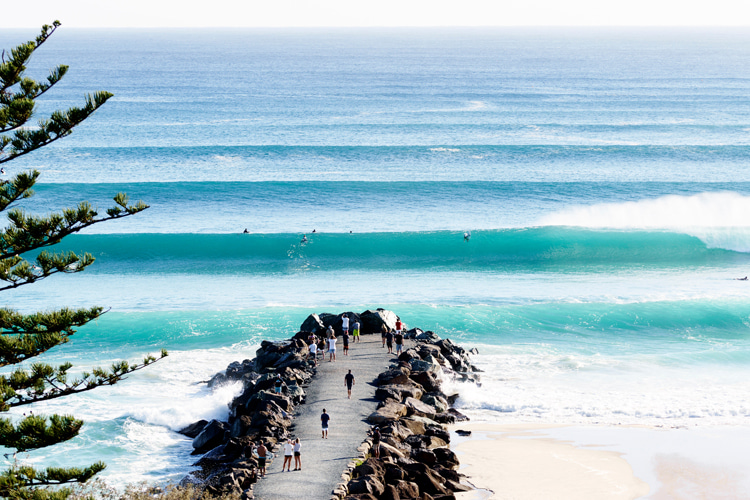At the world's most crowded surf breaks, you'll always find surfers sitting further out than the rest of the pack. They are "waiting for the set." But do waves really come in sets? And what are set waves?
In surf lingo, a wave set is a series - or group - of waves that are generally larger and often more powerful than the average for a given period of time or day.
They typically arrive in groups of between 2-to-15. But there might be more.
Their arrival tends to be generally consistent, with surfers waiting from five minutes to once an hour for the golden moment.
Knowing when set waves are approaching will help surfers identify the best ones for their rides and avoid getting pounded or caught inside.
The "cleanup set" usually goes unridden and sweeps the lineup clear of surfers.
Waves are a product of the wind. When the wind blows over a large surface of open ocean water, it creates ripples.
The size and extent of a ripple depend on the wind speed, the distance it blows across the water, and the length of time the wind blows.
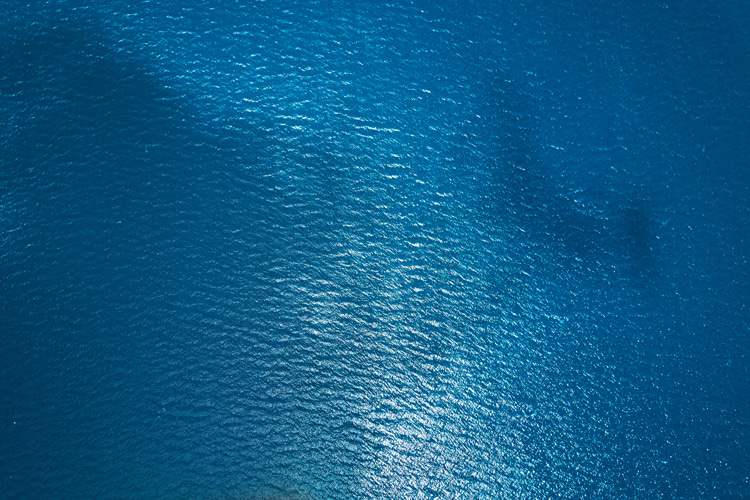
Swell Energy
As waves travel from the fetch across the sea, they tend to group together or sort into more consistent groups.
Waves move at different speeds, i.e., they form different swells.
In other words, short-period waves gather with short-period waves, and longer-period waves hang out with longer-period waves.
Swells are groups of waves that outlast the wind that formed them and propagate across the ocean using their own kinetic energy.
Once they're on their way, they no longer rely on the wind to travel across the ocean.
A 15-second period swell can progress with little loss of size or energy. It is called a groundswell.
A groundswell is a group of storm-generated waves that travel thousands of miles and steadily organize into stable packs.
On the other side of the spectrum, you'll find wind swells.
Wind swells are groups of waves/ripples created by local winds or winds blowing close to shore. They are more disorganized and chaotic.
Ground swells are more predictable than wind swells and feature long wavelengths.
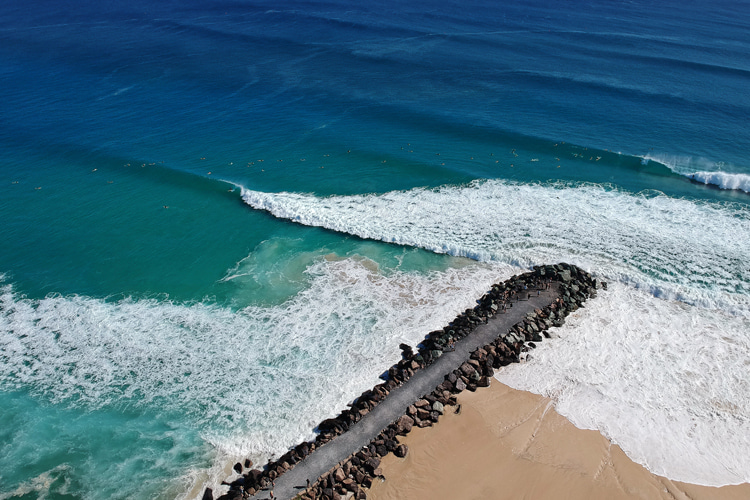
Waiting for the Set
Surfers usually say that a "set" is a series of ocean waves that travel in groups of seven, with the seventh wave being the biggest and most powerful.
The assumption is based on the time spent in the water waiting for the waves to arrive from the horizon.
The lulls are often followed by action. Normally, it takes a few minutes, but it could take half an hour or more.
So, why do surfers refer to set waves while waiting for them in the lineup?
Is there an organized pattern of ripples traveling with intervals of several minutes and grouped in two, three, five, or seven waves?
Yes and no.
The truth is that there is no regular pattern when it comes to witnessing the arrival of waves produced by wind hours ago, hundreds or thousands of miles away from the shore.
The origin and the behavior of a swell or group of waves are not geometrical, mathematical, or entirely predictable.
Nevertheless, we could say there are empirical patterns that, although not statistically relevant and replicable, do work for surfers.
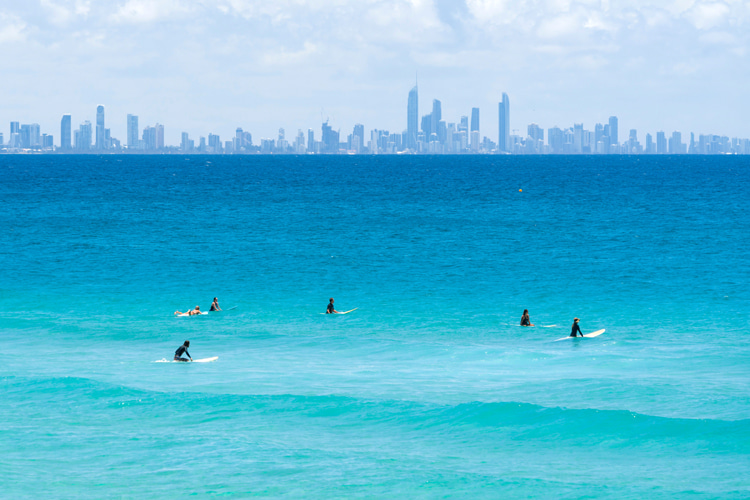
The Biggest Wave of the Set
On a regular day, wave caravans marching toward the shore often feature between three and 16 waves.
The first wave is usually very small, the next one is bigger, and then you get the biggest one, which is often in the middle of the group. Then, they tend to get smaller and smaller.
The explanation is simple.
The waves in the back move forward, grow in size, and then diminish as they reach the front.
As a result, surfers tend to notice that the fifth or seventh is the biggest and call it the set wave. But they forget to analyze the pattern that comes right after the big one.
Also, the so-called "set waves" are often the result of a reorganization of long-distance wave trains near the shore.
When (a group of) waves reach the coastline, they pass over sandbanks and reorganize into new waves.
The consequence is a change in the number of waves that are available to surfers.
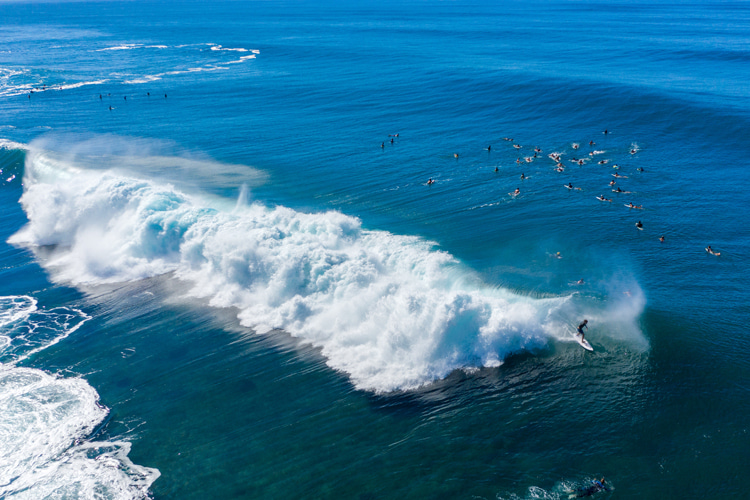
The Randomness of the Ocean Wave
In conclusion, there is no wave set model or pattern for a particular surf break or beach.
"The more dispersed a swell is, the more pronounced the effects of grouping will be," note Tony Butt and Paul Russell in their book "Surf Science."
"Grouping comes about through the constructive and destructive interference of two or more wave trains of different wavelengths."
"The energy of a swell is carried in the group, not in each individual wave."
"Individual waves do not last very long: they are generated at the back of the group, move through to the front, and then disappear."
Finally, the behavior of a swell - or consecutive swells - when it reaches the coast depends on many variables, including bathymetry, coastal geomorphology, local winds on the coast, tides, refraction, etc.
